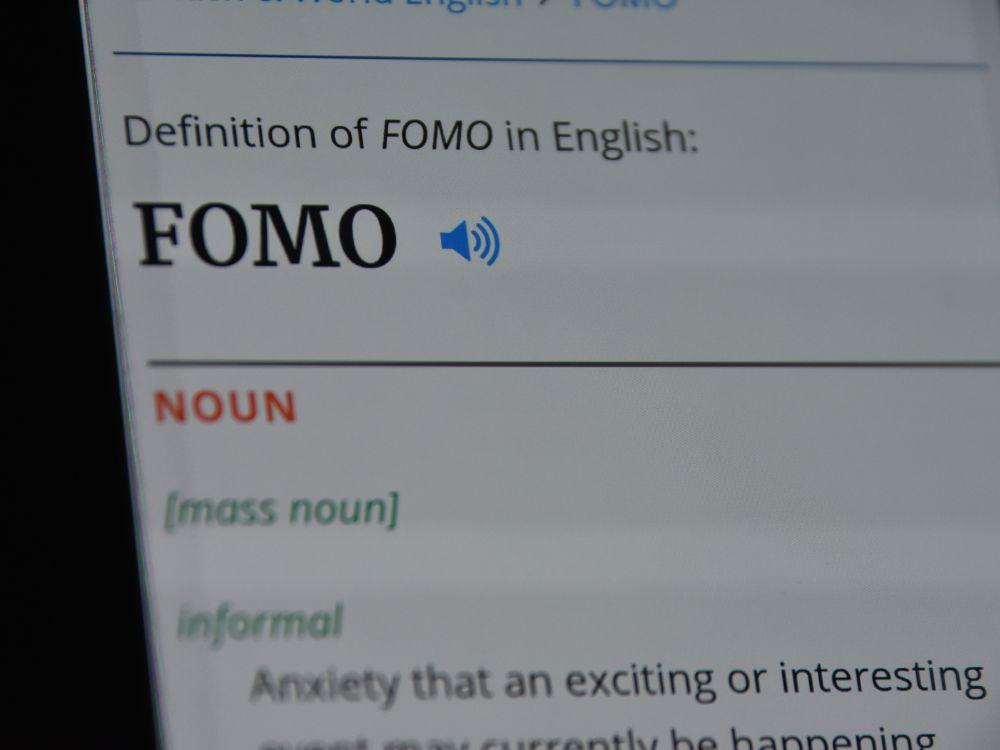
Let’s talk about landing page and advertising strategies – specifically a popular tactic called FOMO marketing. For those unfamiliar, a landing page is a standalone web page that allows you to target advertisements to people and direct them to fill out a lead form or make a purchase. They can be super powerful when done right.
Now when it comes to driving conversions and sales on these landing pages, marketers employ all kinds of psychological tricks. And one tactic that has soared in popularity recently is playing on people’s fear of missing out (also known as FOMO).
We’ve all experienced FOMO before – that anxious feeling when others are doing or having something that you’re not. Marketers intentionally trigger this emotion to motivate consumer behavior online. You may have noticed language like “limited time only!” or “only 3 units left!” on websites and ads. This urgency is meant to spur us into taking action.
FOMO marketing definitely works, but also raises some ethical concerns which we’ll dive into shortly.
Overall, the concept leverages some deep-rooted human desires to be included and not miss an opportunity. Skillfully incorporating FOMO triggers into landing page design can skyrocket conversion rates. But, if done clumsily or disingenuously, it can also destroy trust.
So in this article, we’ll explore best practices for running FOMO campaigns – how to walk that fine line between persuasion and manipulation when employing fear of missing out on your landing pages. Exciting stuff, let’s get started!

So before we go any further – what exactly is FOMO marketing? How does it work and how do savvy marketers tap into these powerfully motivating human emotions of desire and scarcity?
At its core, FOMO marketing refers to e-commerce tactics that stimulate that feeling of needing to act fast or risk missing a good deal or hot trend.
Playing on our instinctual herd mentality if you will – this notion that if others are interested in something, we should be too!
Brands trigger this reaction in all sorts of creative ways. You’ve likely seen countdown timers showing a promotion will expire soon or notices that limited inventory remains. The intent is to create this illusion of exclusivity and urgency. To make us feel like we’ll miss out if we don’t buy or sign up now.
And here’s the psychology behind why it works so well – as social creatures, we intrinsically crave belonging and fear exclusion. When skillfully executed, FOMO campaigns harness these instincts and light a fire under consumers to convert higher and faster.
Of course, as with many marketing tactics, FOMO can also be taken too far through deception or overly aggressive claims. But when done transparently and ethically, it remains an incredibly effective option for boosting landing page conversion rates.
Now that we understand the psychology fueling FOMO customer acquisition, let’s explore some best practices for implementing it yourself without alienating visitors. Sounds good? Onto the ethical considerations!
The use of FOMO tactics in marketing raises some legitimate ethical concerns. At its core, FOMO leverages emotional manipulation and scarcity cues that pressure consumers to make purchases. This understandably causes some people to view the practice as exploitative or misleading.
However, others argue FOMO marketing reflects human psychology and buying behavior we see throughout society. Things like limited-edition merchandise, waitlists at popular restaurants, and lines outside clubs all leverage scarcity and exclusivity. Is FOMO advertising any different in principle?
There are good counter arguments on both sides. Ultimately, the ethics may come down to execution and transparency.
Responsible FOMO marketing is upfront about offers and clarifies urgency claims rather than deceiving visitors. Clear communication allows consumers to make informed choices.
But repeatedly making false scarcity claims or exaggerating limited availability to an unethical degree could understandably outrage customers. And from a business ethics standpoint, eroding consumer trust for a quick conversion bump may cause more long-term brand damage.
There are also regulations around deceptive advertising and “bait-and-switch” practices to consider. Overall, both sides make reasonable points regarding FOMO marketing and ethics. Businesses considering FOMO campaigns should carefully weigh consumer psychology, personal brand values, and regulatory standards in their jurisdiction.
But brands must ask themselves – are we manipulating emotions versus informing choices? There’s a fine line between influence and deceit. More still to discuss on this issue of ethics and responsible FOMO marketing shortly!
Given the ethical considerations around intentionally triggering FOMO, when is it appropriate to employ these scarcity and urgency tactics in your marketing campaigns? Not all businesses or products may be suitable for fear-based sales funnels aimed at manufacturing demand.
Generally, FOMO works best for exciting or aspirational offers that lend themselves to cultivating exclusivity and hype. Think limited-edition products drops, new technologies, luxury merchandise, or software with free trial periods. The goal is making target customers feel like they’ll miss out by not jumping on the bandwagon soon.
Viral sensations, where organic social buzz builds natural intrigue, also pair well with FOMO campaigns to convert interest into sales. However, FOMO may backfire or feel out of place for more mundane or commodity-type products and services. There still needs to be inherent, genuine desirability associated with the offering.
Additionally, the customer lifecycle stage matters. While FOMO marketing can be highly effective at entering and capturing new leads, relying solely on manufactured urgency fails to nurture relationships long-term. Superior product quality and meeting needs ultimately fosters loyalty and retention.
In summary, FOMO works best not as a one-size-fits all approach, but targeted strategically for customer acquisition when launching new products and services primed to generate organic hype. Combine with ethical transparency about claims, and it can responsibly accelerate growth during key phases.
So we’ve talked about how FOMO levers psychology to drive urgency and conversions. But does employing such tactics actually impact bottom-line metrics and work well on landing pages?
When incorporated properly, FOMO triggers like scarcity claims, social proof, and countdown timers reliably lift key landing page performance indicators.
According to a recent LinkedIn study, pages with urgency cues drive up to 400% more conversions compared to control groups. Visitors explicitly say limited-time elements incentivize them to act faster as fear of missing out kicks in.
Landing pages are ideal for FOMO focus because they target ads to interested audiences primed for conversion. Then scarcity and exclusivity reinforce the next step – whether to buy now, register for a free trial, subscribe to a newsletter, etc.
Specifically for e-commerce sites, FOMO marketing increases average order value as customers add more to their carts or upgrade to capitalize on the perceived deal and urgency. And the tactic also shows substantial ROI across verticals like SaaS, consumer electronics, fashion and beyond.
The takeaway is that data substantiates FOMO as an impactful behavioral trigger when executed properly on landing pages. Website visitors intrinsically respond to the same scarcity cues that influence real-world buying habits. Once again though, authenticity and transparency remain key so as not to erode consumer trust.

Like most marketing tactics, FOMO has both advantages and disadvantages brands should weigh when considering it for their advertising and landing pages. Used judiciously and ethically, FOMO can drive impressive conversion rate boosts. However, overuse or deceitful execution carries substantial downside too.
On the pro side, the sense of urgency and exclusivity compels visitors to take action instead of bouncing from your site. Implementing FOMO thoughtfully also avoids coming across as “salesy” since it leans more on peer validation than aggressive pitches. And small design tweaks like scarcity claims require relatively little heavy lifting compared to overhaul site experiences.
However, manufacturing false urgency through misleading claims or other shady tactics for quick wins erodes consumer trust in the long run. And poorly matched products without inherent appeal invite skepticism rather than fueling intrigue with FOMO messaging. Relying solely on gimmicks instead of developing quality offerings fails over time.
Additionally, constantly bombarding customers takes away the feeling of something special and wears out FOMO efficacy. Savvy consumers eventually recognize hollow threats of limited availability when items always seem scarce. There are also ethical risks around exploiting vulnerabilities rather than empowering informed choices.
In closing, wielded judiciously FOMO boosts conversions, but leaning on it as a crutch or through deception backfires horribly. Mindful incorporation balanced with an excellent product that sometimes provides VIP access works best.
If you’ve decided to ethically integrate some FOMO urgency and exclusivity into your landing pages, what are the practical steps to implement this and optimize performance? Let’s outline the game plan covering design, copy, calls-to-action and more.
With some thoughtful planning, FOMO can transform landing page performance when visitors feel like they’ll miss an opportunity by not converting. Just maintain transparency and help consumers, not deceive them.

Ready to effectively jumpstart FOMO urgency on your landing pages? Let’s outline 10 proven best practices for success without compromising ethics:
Master these 10 fundamentals respectfully and FOMO becomes a rocket fuel conversion tactic. Pay attention to nuances like conveying exclusivity without exaggeration. Get too aggressive and the urgency feels manufactured. But properly balance scarcity with credibility and expect a lift in signups and sales!
While FOMO can skyrocket landing page performance, the tactic also lends itself to blunders eroding trust and backfiring completely. Let’s review 10 critical mistakes to avoid when deploying fear of missing out messaging and urgency triggers:
Avoid these 10 pitfalls and FOMO transforms into an audience-respecting strategy generating impressive ROI and customer growth. But lean too heavily into manufactured hype and eventually pay the consequences. As with everything in marketing, nuance drives sustainable returns.
We’ve covered core best practices for deploying FOMO urgency triggers on landing pages. But a few additional considerations remain on the periphery worth mentioning as well:
In summary, wringing out long-term FOMO efficacy and avoiding missteps means accounting for external factors like regulations, personalization opportunities and lifecycle stage beyond core funnel execution. Course correct in real-time!

As with all digital strategies, we have to wonder – how long can FOMO tactic effectiveness last in an evolving marketplace? Will landing page visitors become increasingly desensitized to manufactured scarcity and urgency over time?
Customer sophistication already grows rapidly. We’ve seen gimmicky tactics like pop-ups and clickbait headlines lose potency from overuse. Could FOMO also jump the shark without continual innovation?
Perhaps at some point psychologically exploiting fears of missing out crosses a line where more people are turned off than turned on by the hard sell techniques. We may see a shift towards more subtle and nuanced plays on aspiration rather than base anxiety.
Additionally, personalized behavioral targeting allows brands to tap psychological triggers beyond one-size-fits-all approaches like time-limited discounts. Creative future strategies might map FOMO to unique visitor skillsets and values.
Regulatory crackdowns could also constrain the tactic if legislators decide fear-centered emotional manipulation goes too far. Expect tighter rules around deceitful scarcity claims and clear delineation between influence and deception.
So while FOMO stands strong today, the clock likely ticks on sliding into overplayed trope territory. Brands should focus on usage minimization and personalization while keeping a sharp eye on ethical lines in the sand. How FOMO and urgency manifests years from now will fascinate!
When executed transparently and minimally, most experts consider FOMO tactics ethical. But aggressively manipulating emotions or deceiving customers crosses ethical lines. Brands must balance psychology and ethics carefully.
Studies consistently show the urgency and exclusivity of FOMO boosts conversions substantially compared to control groups. Humans inherently respond to perceived scarcity opportunities.
Low-hanging fruit includes visual cues like stock counters, urgency rhetoric in copy, spotlights on social proof, timers showing limited-time offers and emphasizing exclusivity.
Instead of pure deception, try partial scarcities – like only opening a finite number of discounted spots at special VIP rates. Creates legitimate demand spikes.
Typically not. FOMO pairs best with broadly exciting offerings lending themselves to aspirational, prestige-based marketing. More commoditized products don’t carry the same intrigue.
Be careful sending too many reminders to avoid annoyance. Use sophisticated tools like dynamic retargeting to selectively re-engage high-intent visitors open to nudges.
Yes, data directly correlates FOMO marketing with substantial lifts across metrics like signups, conversions, average order value. When applied judiciously, it clearly lifts bottom lines.
Hopefully these FAQs help provide additional FOMO guidance! Reach out anytime with other questions.

In closing, hopefully this piece clarified best practices around responsibly integrating FOMO marketing tactics on high-converting landing pages. When strategically tapped, that innate human fear of missing out proves a compelling trigger for accelerating growth.
A few parting key takeaways worth remembering:
While critics rightly argue FOMOhorse emotional manipulation, data shows visitors intrinsically respond to shortage cues anyway. Tactics merely act as a proxy for real-world buying habits.
So consider including FOMO appropriately on landing pages moving forward. Just ensure brand values anchor decisions first, revenue second. Prioritize trust above all else.
With that balanced ethical approach, fear of missing out stands ready to deliver landing page conversions for years to come. Just stay nimble and customer-centric!
Where Creativity Meets Simplicity - Customize with Ease! Forget about Coding and Enjoy Designing Your Website.